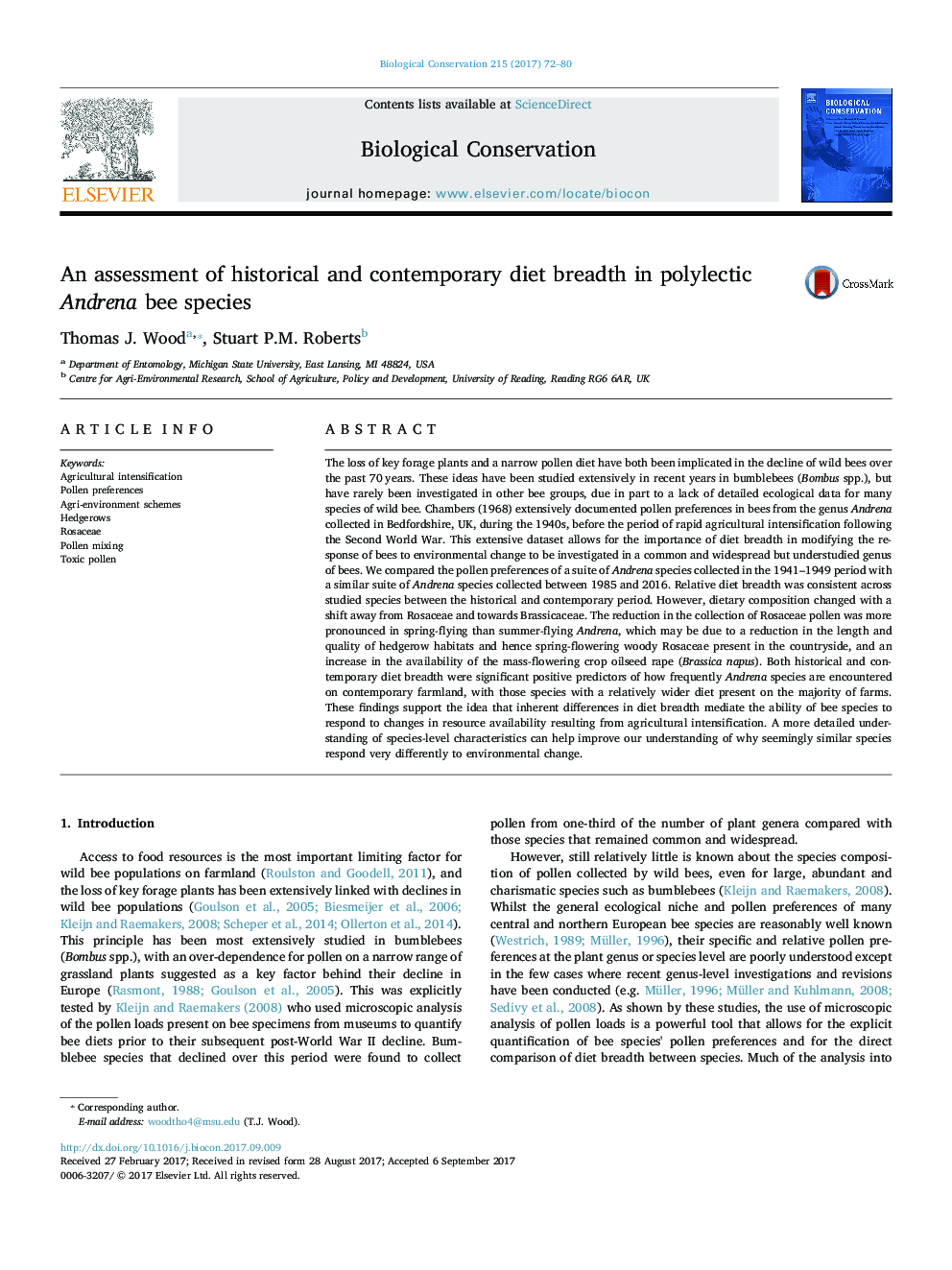| کد مقاله | کد نشریه | سال انتشار | مقاله انگلیسی | نسخه تمام متن |
|---|---|---|---|---|
| 5743023 | 1617890 | 2017 | 9 صفحه PDF | دانلود رایگان |
عنوان انگلیسی مقاله ISI
An assessment of historical and contemporary diet breadth in polylectic Andrena bee species
ترجمه فارسی عنوان
ارزیابی دامنه رژیم های تاریخی و معاصر در گونه های زنبور عسل اندرنا
دانلود مقاله + سفارش ترجمه
دانلود مقاله ISI انگلیسی
رایگان برای ایرانیان
کلمات کلیدی
موضوعات مرتبط
علوم زیستی و بیوفناوری
علوم کشاورزی و بیولوژیک
بوم شناسی، تکامل، رفتار و سامانه شناسی
چکیده انگلیسی
The loss of key forage plants and a narrow pollen diet have both been implicated in the decline of wild bees over the past 70Â years. These ideas have been studied extensively in recent years in bumblebees (Bombus spp.), but have rarely been investigated in other bee groups, due in part to a lack of detailed ecological data for many species of wild bee. Chambers (1968) extensively documented pollen preferences in bees from the genus Andrena collected in Bedfordshire, UK, during the 1940s, before the period of rapid agricultural intensification following the Second World War. This extensive dataset allows for the importance of diet breadth in modifying the response of bees to environmental change to be investigated in a common and widespread but understudied genus of bees. We compared the pollen preferences of a suite of Andrena species collected in the 1941-1949 period with a similar suite of Andrena species collected between 1985 and 2016. Relative diet breadth was consistent across studied species between the historical and contemporary period. However, dietary composition changed with a shift away from Rosaceae and towards Brassicaceae. The reduction in the collection of Rosaceae pollen was more pronounced in spring-flying than summer-flying Andrena, which may be due to a reduction in the length and quality of hedgerow habitats and hence spring-flowering woody Rosaceae present in the countryside, and an increase in the availability of the mass-flowering crop oilseed rape (Brassica napus). Both historical and contemporary diet breadth were significant positive predictors of how frequently Andrena species are encountered on contemporary farmland, with those species with a relatively wider diet present on the majority of farms. These findings support the idea that inherent differences in diet breadth mediate the ability of bee species to respond to changes in resource availability resulting from agricultural intensification. A more detailed understanding of species-level characteristics can help improve our understanding of why seemingly similar species respond very differently to environmental change.
ناشر
Database: Elsevier - ScienceDirect (ساینس دایرکت)
Journal: Biological Conservation - Volume 215, November 2017, Pages 72-80
Journal: Biological Conservation - Volume 215, November 2017, Pages 72-80
نویسندگان
Thomas J. Wood, Stuart P.M. Roberts,
